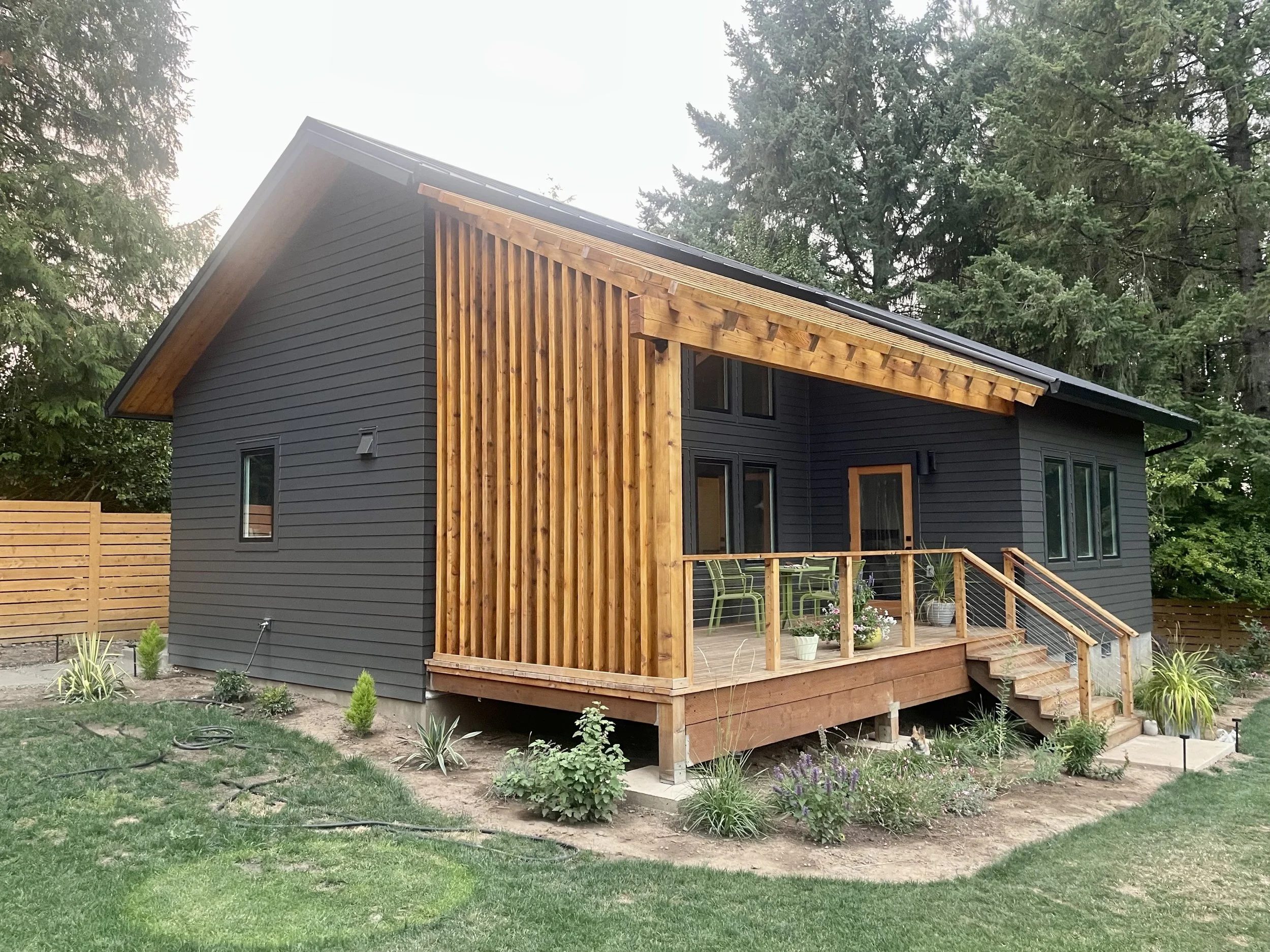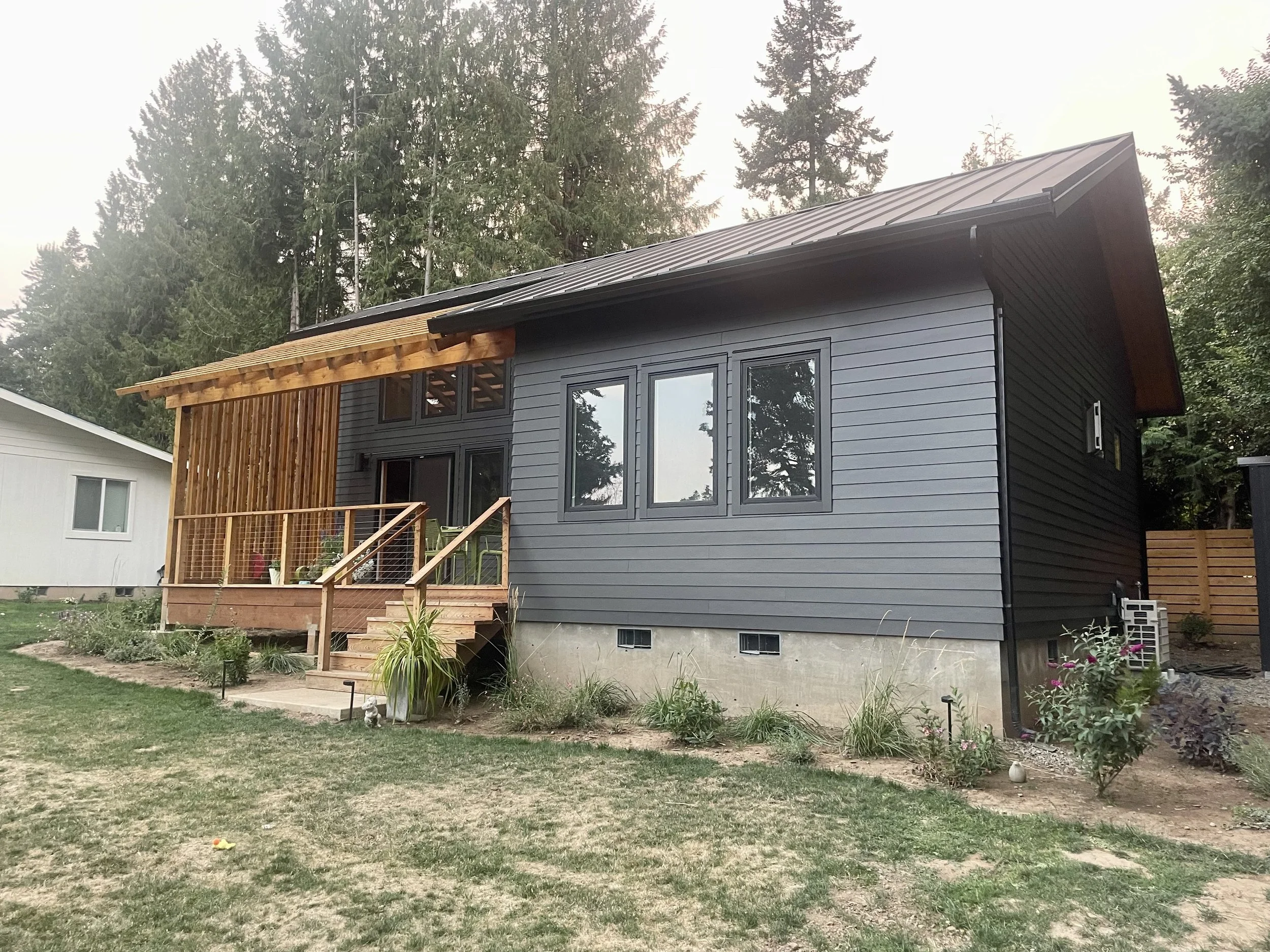In recent years, the popularity of accessory dwelling units (ADUs) has surged due to their potential as income-generating properties. Homeowners are capitalizing on the opportunities provided by short-term rentals, such as Airbnb or VRBO, or long-term rentals to supplement their earnings. However, when it comes to designing an ADU for these rental purposes, there are several important considerations to keep in mind. In this blog post, we will explore the key design considerations for both short-term and long-term rental ADUs.
Short-Term Rental ADUs
Flexibility and Guest Experience
When designing an ADU for short-term rentals, flexibility is key. Consider incorporating modular furniture that can be easily rearranged to accommodate varying guest preferences. Additionally, emphasize the overall guest experience by selecting high-quality and durable materials, modern amenities, and stylish furnishings that align with the target demographic. Strive to create a space that feels inviting, unique, and comfortable to ensure positive reviews and repeat bookings.
Knowing that the short-term rental market is becoming increasingly competitive, consider design elements that enhance the guest experience while becoming instagrammable moments. Let your guests help you market the rental through their social media and referring your rental to other potential guests.
Privacy and Separation
Ideally, an ADU designed for short-term rentals should provide a sense of privacy and separation from the main residence. Consider features such as a separate entrance, dedicated outdoor spaces, and soundproofing measures to minimize any disturbances between guests and hosts. A well-designed layout with distinct sleeping areas and private bathrooms can enhance the overall appeal of the space. Specifically, a detached ADU is an ideal unit because it is physically separated from the main house.
Functional Kitchen and Amenities
A fully-equipped kitchen with modern appliances is a significant factor for guests who prefer short-term rentals as they often are choosing to stay in an Airbnb rather than a traditional hotel. Ensure the ADU's kitchen is well-designed, with ample counter space, and essential cooking utensils, and easy to use appliances. Other amenities, such as laundry facilities, reliable internet, and entertainment options, should also be considered to enhance the overall guest experience.
ADU Storage Solutions
Short-term rental ADUs often attract guests who may have a fair amount of luggage. Incorporate clever storage solutions, such as built-in closets, shelving, or under-bed storage, to maximize space and allow guests to keep their belongings organized during their stay.
Long-Term Rental ADUs
Functional and Practical Layout
While short-term rentals prioritize aesthetic appeal, long-term rental ADUs should focus on practicality and functionality. Ensure that the design places emphasis on optimizing the available space for everyday living. Consider incorporating features like ample storage space, efficient floor plans, high performance systems, and and elegant and durable materials to cater to long-term tenants' needs.
Private Outdoor Spaces
Long-term tenants often appreciate outdoor spaces where they can relax and unwind. Design the ADU to include private patios, balconies, or even small gardens, providing a sense of tranquility and allowing tenants to enjoy some fresh air, and make the smaller size of an ADU feel larger.
Sustainable and Cost-Effective Features
Long-term rental ADUs can benefit from energy-efficient designs and cost-saving features. Consider integrating energy-saving appliances, LED lighting, efficient insulation, and solar power options. These features not only reduce utility costs for tenants but also align with environmentally friendly practices. They can also help your ADU rental unit stand out in the competitive rental market.
Privacy and Noise Reduction
Long-term tenants typically value privacy and minimal noise disruption. Incorporate measures such as soundproofing materials, separated entrances, and well-insulated walls to create a peaceful living environment. Adequate separation and privacy between the main residence and ADU are also essential to ensure a harmonious coexistence.
ADU Storage Considerations
Considering ADUs are smaller dwellings, careful consideration should be paid to the design of storage space. For long term tenants, you may want to consider spaces for larger items like bikes, camping gear, and even car parking. Ample closet space for clothes and personal belongings is a great start, but often people who live in a rental long-term have other items and dedicated storage space can be a huge selling point for your ADU.
Conclusion
Designing an ADU for short-term rentals versus long-term rentals requires distinct considerations to appeal to the target renters. Short-term rentals should prioritize flexibility, guest experience, and privacy, along with functional amenities. On the other hand, long-term rentals should focus on practical layouts, efficient use of space, and sustainable features, while also prioritizing privacy and peace for tenants. By carefully considering these factors, homeowners can ensure their ADUs cater to the specific needs and preferences of their chosen rental market, ultimately maximizing the property's income potential.
At Modern ADU Plans we have designed dozens of ADUs for both short-term, Airbnb style rentals, as well as units for long-term rentals. We now offer a range of designs that well suited to help you add an ADU to your property and start earning income from a rental unit. Check out all of our available designs here:
Open and bright living rooms are great for rental units - both short and long-term.
Providing outdoor living space makes smaller ADUs feel more spacious and are an attractive amenity for rental units.





